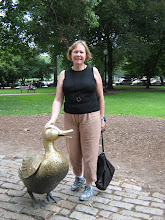Having time to read with a parent or caregiver isn’t just about the activity of reading. It’s about having consistent, focused time together, without other distractions or demands. Even a few minutes of reading together gives both you and your child a chance to slow down, connect with each other, and share an enjoyable activity.
Young children whose parents read to them daily have been exposed to at least 290,000 more words by the time they enter kindergarten than children who aren’t read to regularly. And depending on how much daily reading time children get, that number can go up to over a million words.
There’s no reason to stop reading to children either, once they’re able to read themselves. They often enjoy hearing books a bit above their ability level, for example hearing chapter books when they’re still reading picture books on their own. Reading together through elementary school supports their developing literacy and helps children develop empathy. As children read books about people whose lives are different from their own, they gain an appreciation for other people’s feelings, as well as other cultures, lifestyles, and perspectives.
When parents who borrow from our school library ask for reading recommendations, as well as suggesting novels for the family serial, I suggest they borrow from the Empathy Box. Here we keep books that appear on Empathy Lab UK booklists as well as books from the Inclusive Books for Children, the IBC lists. These books allow parents to read about children whose lives may be very different from theirs, but they also allow children to find similarities with children who appear very different.
The other place I send them is to the nonfiction shelves because nonfiction has changed so much since they were students. Our library has a big collection of narrative nonfiction like biographies and beautifully illustrated information books which can be dipped into or explored thoroughly depending on the child's interest.
At the moment the parents who visit the library are reading Premiers Reading Challenge books, as their children are in Kindergarten to Year 2, but that will change very soon as most of them will have read thirty books by the end of this term and be looking for other sources of good books.
Reading to children with expression, at a leisurely pace and with room for chatting is ideal, but if you want more, this book Read With Me by Samantha Cleaver and Munro Richardson outlines the ABCs of Active Reading:
Ask questions
Build vocabulary
Connect to the child's world
and you will create a lifelong love of reading.



No comments:
Post a Comment